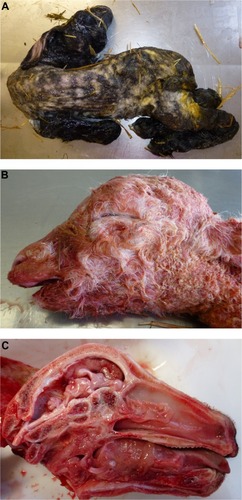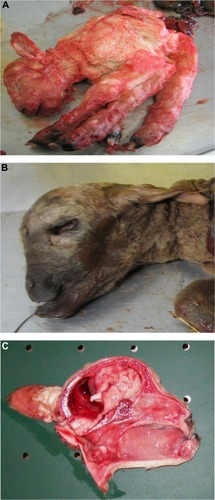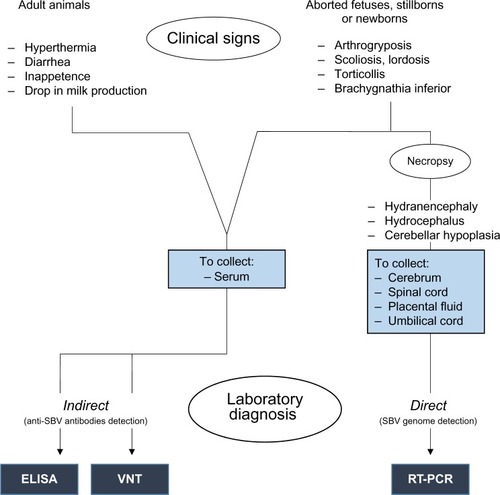Figures & data
Figure 1 European countries having reported cases of SBV infection in cattle, sheep, or goat herds or having detected antibodies in serum or milk between summer 2011 and late autumn 2014 presented as a cumulative list (A) and [img], [img], [img], [img], [img], [img] colored on a map of Europe (B).
Abbreviation: SBV, Schmallenberg virus.
![Figure 1 European countries having reported cases of SBV infection in cattle, sheep, or goat herds or having detected antibodies in serum or milk between summer 2011 and late autumn 2014 presented as a cumulative list (A) and [img], [img], [img], [img], [img], [img] colored on a map of Europe (B).](/cms/asset/a97c1e73-5513-4d1d-b959-ba776aba69aa/dvmr_a_83594_f0001_c.jpg)
Table 1 Mammalian species susceptible to SBV and classified following possible way(s) of identification of viral infection for each of them
Figure 2 Schmallenberg virus infection in stillborn lambs presenting arthrogryposis, scoliosis, and torticollis (A), brachygnathia inferior (B), and cerebellar/cerebral hypoplasia (C).

Figure 3 Bluetongue virus serotype 8 infection in stillborn lambs presenting arthrogryposis (A), brachygnathia superior and anophthalmia (B), and cerebellar hypoplasia (C).

Figure 4 Diagnosis of SBV infection by observation of clinical signs in adult animals and aborted fetuses, stillborns, or newborns, and by performing most commonly used laboratory ways of diagnosis.
Abbreviations: SBV, Schmallenberg virus; ELISA, enzyme-linked immunosorbent assay; VNT, virus neutralization test; RT-PCR, real-time polymerase chain reaction.

Table 2 Comparison between BTV-8 and SBV
